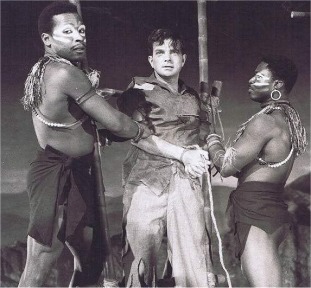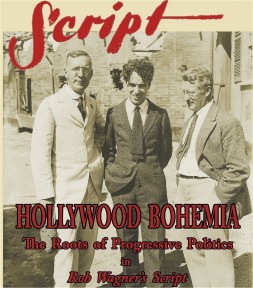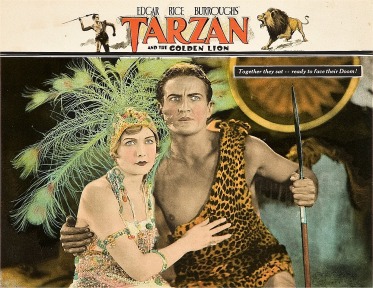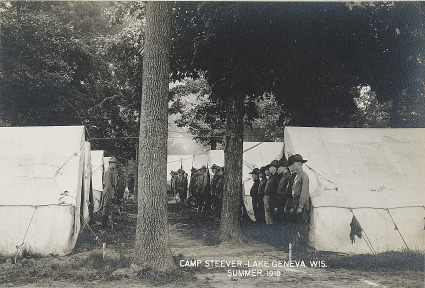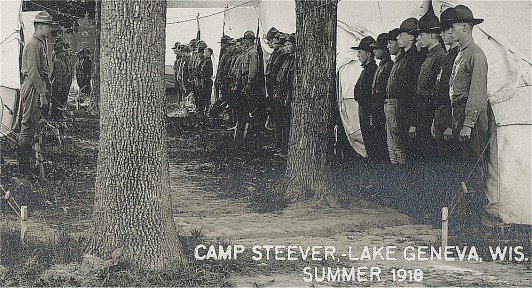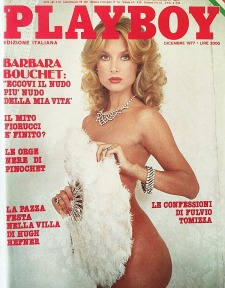
Official Edgar Rice Burroughs Tribute and Weekly Webzine Site Since 1996 ~ Over 15,000 Webpages in Archive Volume 7386 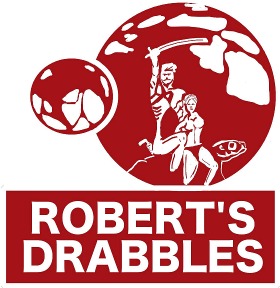 |
ERB 100-Word Drabbles
AUGUST III Edition :: Days 1 - 15
See Days 16 - 31 at ERBzine 7386a
by Robert Allen Lupton
With Collations, Web Page Layout and ERBzine Illustrations and References by Bill Hillman
FLIGHT TIME
August 1: On this day in 1983, British character actor, Peter Arne, was bludgeoned to death in Knightsbridge, London, UK.
Born as Peter Randolph Michael Albrecht, he appeared in more than 50 films including pilot Dick Penrod in “Tarzan and the Lost Safari.” Other films included “Chitty Chitty Bang Bang,” “Victor Victoria,” “Khartoum,” and three Pink Panther films. He was regularly cast as a villain, often a thief, scoundrel, or an unscrupulous military officer. In “Lost Safari,” he played the pilot of the plane that crashed in the jungle to begin the adventure.
He was also a bit of a scondrel in real life. n the late 1940s, Arne and his partner at the time, Jack Corke, befriended English novelist Mary Renault and her partner, Julie Mullard, on the SS Cairo, a steamer bound from Britain to South Africa.
Arne persuaded Mary Renault that they could get rich quickly by building housing for recent immigrants like themselves. The four of them established a company called CAM Construction, which Renault financed using a £25,000 award she'd received from the movie studio Metro-Goldwyn-Mayer, and the company began employing labourers and craftsmen to begin construction of several houses. Arne and Corke (an alcoholic) squandered the funds on high living, They also stole her car before Renault hired an attorney. Arne resigned from the country, fled South Africa, and returned to England.
The drabble for today is “Flight Time,” inspired by Arne’s role in “Tarzan and the Lost Safari.”
FLIGHT TIME
![]()
The pilot, Dick Penrod, replied. “Starboard engine’s losing oil pressure.”
Seconds later, the starboard engine burst into flame. Penrod cut fuel to the engine and feathered it. The flames went out, but the engine was dead.
Penrod said, “I can fly on one engine, but the fire
damaged a fuel line and we’re losing fuel. I can’t shut it off.
Another passenger, Doodles Fletcher, said in a proper
British accent. “I say, how far can we fly with one engine and leaking
fuel?”
“All the way to the crash site!”
TOLERANCE
August 2: On this date, writer, editor, and publisher Robert Leicester Wagner was born in Detroit, Michigan. Wagner was a prolific magazine writer, as well as a screenwriter and director. He founded edited and published “Script,” a magazine, and convinced several writers and film personalities to contribute stories and articles without pay. The magazine’s contributors included Edgar Rice Burroughs, Walt Disney, Willian Saroyan, Charlie Chaplin, Ogden Nash, and Ray Bradbury. Edward G. Robinson’s wife, Gladys, contributed a gossip column.
Script published several of Burroughs’s nine ‘Inspector Muldoon’ mysteries, Burroughs’s humorous short story, “Even Apes Fight For It,” a travelogue, “Eleven Year Itch,” “The Birth of Tarzan by his Poppa,” (published in 1932 and reprinted in 1937), and finally “Symbol of a New Day” in 1934.
Unlike Burroughs. Wagner was an active socialist and pacifist and wrote extensively for such publications. He and Burroughs were friends in spite of their opposing political views.
Most of ERB’s work published in Script Magazine is available at www.erbzine.com.
After Rob’s death, both his wife and son struggled to keep the magazine afloat, eventually selling it to Robert Smith, the general manager of the Los Angeles Daily News, who was unable to attract sufficient advertising and the magazine folded in 1949.
The drabble for today was inspired by the relationship between ERB and Wagner, in spite of their opposite political viewpoints. Call it “Tolerance.”
TOLERANCE
![]()
“If I only publish writers who agree with me, I might
as well write everything myself.”
“Tarzan and John Carter are both violent men. We’re
pacifists.”
“His friendship’s more important to me than his politics.
More importantly, philosophy aside, the man can damn sure write. Let’s
put done to this issue, Ed and his wife are expecting us for dinner and
bridge at seven.”
FAMILY TIES
August 3: On this day in 1974, actress Edna Murphy, who appeared in “Tarzan and the Golden Lion,” passed away in Santa Monica, California. Murphy appeared in over 80 films between 1918 and 1932, including several as the leading female character. She was once engaged to Irving Thalberg. She was married to director Mervyn LeRoy for almost five years. He deserted her and she divorced him. She was blacklisted in Hollywood after the divorce and unable to find work.
She retired in 1933. She died alone, after living for years as a virtual recluse. Sadly, her 1927 wedding dress was found perfectly preserved, hanging in her living room.
In “Tarzan and the Golden Lion” Edna played a character who never appeared in a single Tarzan novel. According to “Tarzan on Film’ by Scott Tracy Griffin, Edna portrayed ‘Betty Greystoke,’ Tarzan’s sister. Other sites say that she played ‘Flora Hawks,’ a friend of Jane Porter. By whatever name, she’s captured while visiting Africa and taken to Opar where she is to be sacrificed to their lion god. You know the rest.
The drabble for today is “Family Ties,” inspired by the film, “Tarzan and the Golden Lion.”
FAMILY TIES
![]()
“Who’s Flora? Do you mean, Betty Greystoke, my sister’s
been captured?”
“Don’t quibble. Edna Murphy’s character, whatever
her name, has been taken.”
It’s so confusing,” said James Pierce. “We don’t have
any lines and we can’t see the intertitle cards.”
Dorothy stopped him. “Be confused if you must, but
go quickly and save the girl. Just don’t call her by the wrong name when
you find her!”
“I won’t call her anything. It’s a silent picture!”
August 4: On his day in 1984, actress Kate Rockwell was born in Connecticut as Katherine Rockwell Wilfong. She appeared in the 2008 movie, “Sex and the City. Her theatre credits are impressive. She played Jane in the regional production of “Tarzan,” presented by the “Muny,” the Saint Louis Municipal Opera Theatre, from June 25, 2014 through July2, 2014. Nicholas Rodriguez played Tarzan.
Among her Broadway appearances, she played as Margot in “Legally Blonde,” a member of the tribe in “Hair,” Sherrie in “Rock of Ages,” Skylar in “Bring it On: The Musical,” and Karen in “Mean Girls.”
The drabble for today, “Kate of Ages,” is a non-existent interview with Kate Rockwell. Ten of her stage productions appear in the dialogue. I couldn’t work in “A Funny Thing Happened on the Way to the Forum” or “High School Musical.”
KATE OF AGES
![]()
“They wanted a brunette, I said no problem, I’m not legally blonde. My career’s been a carousel, sometimes I thought I was f#@king up everything and others, I realized being cast depends on fate. Broadway can be like the circus in winter, shut down until spring.”
“Any advice?”
“Some days you fight the mean girls, some days you
deal with a confederacy of dunces. Don’t quit. I say bring it on.”
“Do you focus on certain types of role?”
“No, I’ve played both beauty and the beast!”
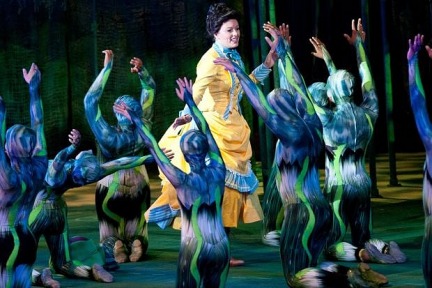
OLD HUMBUG
August 5: On this day in 1887, one of Hollywood’s busiest character actors, Reginald Owen was born at Wheathampstead, Hertfordshire, England. Among his more than 100 films was “Tarzan’s Secret Treasure” starring Johnny Weissmuller and Maureen O’Sullivan.
Owen, in my humble opinion, was the best Ebenezer Scrooge ever, playing the role in the 1938 film version of ‘A Christmas Carol.’ He is one of the few actors to have played both Sherlock Holmes and Dr. Watson on screen, although in different productions. He played Thomas Cromwell in his first film, ‘Henry VIII’ in 1911 and Major General Sir Brian Teagler in his last, ‘Bedknobs and Broomsticks’ in 1971. Along the way he appeared in ‘Mary Poppins,’ ‘Darby’s Rangers,’ ‘Tammy and the Doctor,’ ‘The Secret Garden,’ and ‘The Canterville Ghost,’ to name but a few. He did proper and pompous better than anyone.
In Secret Treasure, Owen played Professor Elliot, the leader of a scientific expedition. Owen and Tarzan rescue Boy from the Ubardi tribe, which is about to sacrifice the child. Learning that there is gold on Tarzan’s land, two greedy members of the safari let the professor die from a fever and then kidnap Boy and Jane to force the two to lead them to Tarzan’s gold. Tarzan uses elephants and crocodiles to help him rescue his family.
More details and several photos concerning “Tarzan’s Secret Treasure” may be found at https://www.erbzine.com/mag6/0621.html
Today’s drabble, “Old Humbug,” is a compilation of quotes by Reginald Owen, with my thanks for entertaining in films, even when I didn’t know who he was.
OLD HUMBUG
![]()
I spite of such an auspicious beginning, acting was easy for me. Now I’ve been in the theater a long time and it’s the only thing that I can do easily and make money.”
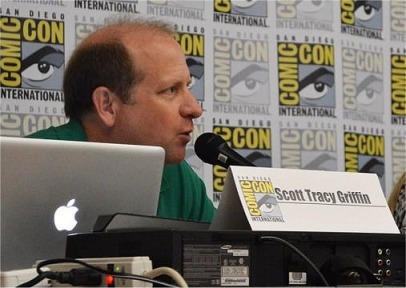
LOVE THE FILMS
August 6: On this day in 2016, Scott Tracy Griffin’s magnificent book, “Tarzan on Film,” published by Titan Books was released. Amazon lists the release date as August 2, but the author told me the actual release date was August 6th. The book has 224 pages and weighs almost four pounds. Profusely illustrated, it is a great resource for the Tarzan films.
You can order the book at : https://www.amazon.com/
www.erbzine.com https://www.erbzine.com/mag63/6399.html has extensive information about the book and the full interview referenced in today’s drabble: https://www.erbzine.com/mag60/6089.html
The drabble for today, “Love the Films,” is taken from Scott Tracy Griffin’s comments during an interview conducted by Bob Leeper. The interview originally appeared at www.nerdvanamedia.com
LOVE THE FILMS
![]()
I like them all. My favorite screen adaptation is the animated Filmation television series Tarzan, Lord of the Jungle, which offers an intelligent, articulate ape man, and is authentic to Burroughs’ original vision. I also have an affection for the RKO Weissmuller films, which were great escapist fare.”
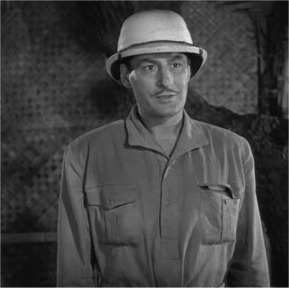
OVERKILL
August 7: On this day in 1981, “Tarzan the Apeman,” starring Bo Derek and Miles O’Keefe was released in America. The film ran 115 minutes and featured Richard Harris and John Philip Law. While Bo Derek played the female lead, her character’s name was changed from Jane Porter to Jane Parker, who knows why, but none the less, she did play a character based on Jane Porter in the film.
Photos and details are located at: https://www.erbzine.com/mag21/2150.html
Gary Goddard, was commissioned to write the screenplay, which initially had the working title, “Me Jane,” reflected that the main focus of the film would be on Jane Porter, and be a showcase for Bo Derek. He wrote the script in two weeks. Two quotes from the script are:
And
"James Parker: Shut up you boring son of a bitch. Ape or Man, I’m going to stuff him and hang him on the wall of my club.”
OVERKILL
![]()
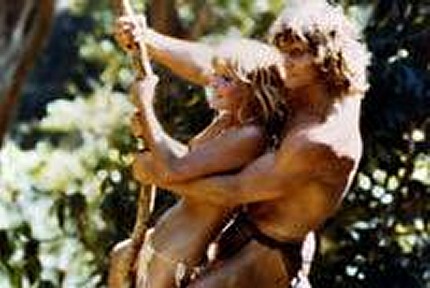
AN HONEST DAY'S WORK
August 8: On this day in 1877, actor Nigel De Brulier was born in Frenchay, a suburb of Bristol, England. His birth name was Francis George Packer. After a time on the British stage, he moved to America in 1898. The 1900 census lists him, under his real name as a butler living in Denver, Colorado. His first film role was “the Pursuit of the Phantom” in 1914.
De Brulier appeared over a hundred films, including his role as a priest in “The Romance of Tarzan (1918), www.erbzine.com/mag5/0504.html. His career lasted until 1943 and his last film was “Tonight We Raid Calais,”
He had roles in “Wings (Best Picture 1927), “The Hunchback of Notre Dame” (1923), “Ben Hur” (1925), “Moby Dick” (1930), “Chandu the Magician” (1930), “The Adventures of Captain Marvel” (1941), and “The Tale of Two Cities” (1935). His authoritarian and somewhat regal bearing was perfect for the many bishops, cardinals, knights and other authority figures he often played. He played the role of Cardinal Richelieu in four films, the first in 1921 and the last in 1939. Interestingly enough, his career as Richelieu covered 18 years, the same amount of time that the Real Cardinal Richelieu was the Chief Minister to Louis the XIII of France
Disney claimed that De Brulier was the model of the sorcerer in “The Sorcerer’s Apprentice” segment of Fantasia. The photo of De Brulier with Mae West is from the film, “I’m No Angel.”
“An Honest Day’s Work,” is the drabble for today, inspired by De Brulier’s career.
AN HONEST DAY'S WORK
![]()
“First, I’ll use my real name, “Francis Packer. I shouldn’t think it’ll be difficult to find work if I choose. Someone’s always in need of a true gentleman, I should think.”
You played fortune tellers, priests, cardinals, shamans, pastors, prophets, padres, and archbishops. Is something like that in your future?”
“No, I’m retiring. I also played a Hindu fakir, a witch doctor, and an astrologer. No matter the vestments, there isn’t all that much difference in playing a shaman on stage as opposed to one in real life.”
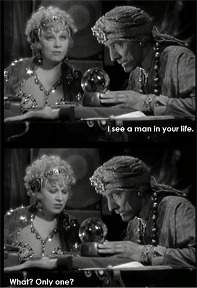
A MELODRAMA TOO FAR
August 9: On this day in 1918, Edgar Rice Burroughs received a $1000.00 check from Red Book Corporation for the motion picture rights to the story, “The Oakdale Affair,” which was produced by World Film Corporation as a five reel film in 1919.
The film with an alternate title in the United Sates, “Bringing Up Baby,” starred Evelyn Greeley and was directed by Oscar Apfel. The movie was filmed in Fort Lee, New Jersey, with cinematography by Alfred Gandolfi, no relation to the wizard.
Other actors appearing in this lost film (no know copy exists) were Eric Mayne, Maude Turner Gordon, Charles MaKay, and Reginald Denny.
The magazine, “Exhibitor’s Trade Review,” released a very unkind review of the film on October 11, 1919, and the drabble for today, “A Melodrama Too Far,” is 100 words taken from that review. The entire review, a plot synopsis, other reviews, the complete cast, and more about the film are available at https://www.erbzine.com/mag7/0765a.html
A MELODRAMA TOO FAR
![]()
Melodramatic license can be stretched to a pretty raw limit, but isn't elastic enough to cover the glaring errors of this picture, which exceeds all reasonable limits in its excursions into the wildly improbable. Director Oscar Apfel probably did his very best to bring order, but found the task a hopeless one.”
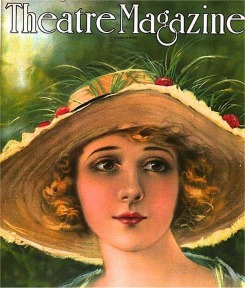
TYPE CASTING
August 10: On this day in 1902, actor Raymond Benitz, who took the screen name Ray ‘Crash” Corrigan was born in Brookings, Oregon. His grave in Inglewood, California remains unmarked to this day. Ray acted in numerous westerns, taking his screen name from his character’s name in the serial, “The Undersea Kingdom.”
In 1937 he purchased land in the Santa Susana Mountains and developed the movie ranch, “Corriganville," where several films, television episodes, and serials were filmed. Bob Hope purchased the ranch in 1966.
He made over 100 films and besides playing adventurers and cowboys on screen, Corrigan had a long career appearing in ape costumes. His first two screen roles were as an ape / gorilla in “Tarzan the Ape Man (1932) and “Tarzan and His Mate” (1934). He designed his own costumes and masks, and played gorillas in “Hollywood Party,” “Murder in the Private Car,” “Darkest Africa,’ “Round Up Time in Texas,” “Three Missing Links,” “The Ape,” “The Strange Case of Dr. Rx,” “Captive Wild Women,” “The Phantom,” “Nabonga,” “She’s for Me,” and a dozen more films, the last of which was as Spanky the Gorilla in 1959s “The Bride and the Beast.” He also appeared as the ‘orangopoid’ in the 1936 serial, “Flash Gordon.”
The photo with this article is of Corrigan in western regalia rather than a man in a gorilla costume.
The drabble for today is “Type Casting,” and it’s based on the career of “Crash Corrigan.”
TYPE CASTING
![]()
“Yep, the filmed a lot of shoot-em-ups at my ranch, Corriganville. I told ‘em if they wanted the ranch, they wanted me on screen. Worked most times.”
“You played a gorilla in over thirty films.”
“First time was with Johnny Weissmuller and Maureen
O’Sullivan. She gave me good advice.”
“What was that?”
“’Ray,’ she said, she called me Ray. “Someone in this
town is always going to try making a monkey out of you. You might as well
get paid for it. And I did.”
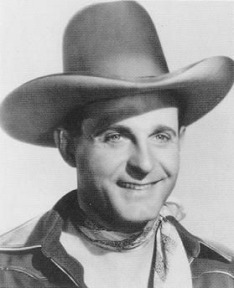
CURTAIN TIME
August 11: On this day in 1934, the last Tarzan daily comic strip scripted by R. W. Palmer (Ralph) appeared in the newspapers. The last page he wrote was 80% into the adaption of, “Tarzan and the City of Gold,” Palmer scripted the first 120 days and Don Garden took over and scripted the last 30. Rex Maxon drew the entire story. Palmer wrote the first Tarzan daily strip (January 7, 1929) and stayed with it for over five and a half years.
Read every strip he wrote at https://www.erbzine.com/mag22/2293.html
Information about Palmer is illusive, but Ralph Palmer was an artist (NOT a writer/copywriter) for Campbell-Ewald Advertising Agency. He was a permanent member of the Plan Board of Campbell-Ewald, and became the Director of the Art Department in October of 1926. No further mention of Palmer is found in Campbell-Ewald’s archives beyond 1928.
Ralph Palmer wrote today’s 100 word drabble, the last 100 words he would write chronicling the daily adventures of Tarzan. Let’s call it, “Curtain Time."
CURTAIN TIME
![]()
The temple guard related what his sweetheart, Maluma had overheard of the plot of Erot and Tomos. And he told of the secret dungeon beneath the temple floor. “Many victims have died there mysteriously; and soon others will be imprisoned there!” Phobeg added, with a warning glance at Tarzan."
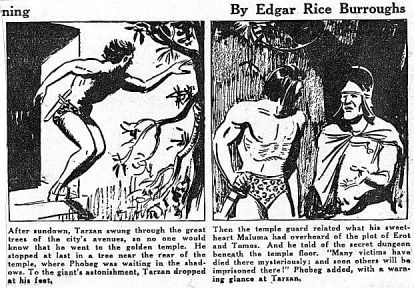
BALD IS THE NEW A-1
August 12: On this day in 1918, Edgar Rice Burroughs and several other men from Illinois began training at Camp Steever, at Geneva Lake, Illinois. The training was very physical and the men, who were training to as reservists, who would hold themselves in readiness should the Germans ever attack Wrigley Field. The men dug trenches, did night maneuvers, and PT in the morning. Burroughs reported that he swam in the lake quite frequently.
It should be noted that ERB eventually became Major Burroughs and was the ranking officer in the First Battalion Second Infantry of the Illinois Reserves during WWI.
The website where I found today’s photograph said that ERB is in the picture, but my old eyes couldn’t find him.
The drabble for today, “Bald is the new A-1,” is from a letter written by Burroughs to his friend H. T. Weston right after ERB finished the training
BALD IS THE NEW A-1
![]()
HADON, KING OF OPAR
August 13: On this day in 2015, Meteor House Press published the first hardcover edition of “Hadon, King of Opar,” by Christopher Paul Carey. Limited to 150 signed, but not numbered copies, the book takes place in the world of ancient Opar as envisioned by Philip Jose Farmer. It is the fourth volume in the Khokarsa series, following “”Hadon of Ancient Opar,” “Flight to Opar,” and “The Song of Kwasin.” Carey has since written more stories in this excellent series.
The book was published with the permission of Edgar Rice Burroughs Inc. It’s currently available on Kindle from “Amazon, $2.99.
https://www.amazon.com
The drabble for today is a reworking of part of one scene from the book. Trust me, Chris didn’t write it this way. His version is much better.“
HADON, KING OF OPAR
![]()
Hadon said, “Let’s not fight. We can be friends.”
Niakaqa sneered. “You don’t deserve to hold my father’s ax, the Ax of Victory. I will kill you.”
Hadon prevailed in the battle, but refused to kill Naikaqa. He lowered the ax and said, “You and your followers will live. There’s been killing enough today.
“Why let us live?”
“I axed you not to fight. Let it go. Ax me no questions
and I’ll take no more lives!”
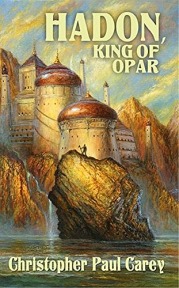
LANGUAGE BARRIER
August 14: On this day in 1915, All-Story Weekly published part two of “Barney Custer of Beatrice.” Barney Custer made up the second half of the novel, “The Mad King,’ which was published by A. C. McClurg on September 18, 1926. The cover of the issue illustrates the first part of “Andrew Garvard – Tidewater Trader” the first of over 50 stories written by John Buchan (Baron John Treedsmuir Buchan, the 15th Governor-General of Canada) to be published in the pulps. The issue also contained the short story, “In the Shadow of the Guillotine,” by Rafael Sabatini (Captain Blood).
Details and illustrations about the story are available at: https://www.erbzine.com/mag7/0758.html
Barney’s sister, Victoria Custer, appears in “The Eternal Lover (Savage),” where she meets her eternal love, Nu, son of Nu. Tarzan and Jane also appear in the story.
The drabble for today is “Language Barrier,” inspired by the story, “Barney Custer of Beatrice.”
LANGUAGE BARRIER
![]()
Custer pounded the dash. “Out of gasoline. I should’ve
checked.”
Emma said, “What’s gasoline. Our automobiles run on
petrol.”
“Do they get better mileage than gasoline powered
vehicles?”
“In a matter of speaking. We measure in kilometers,
which are shorter than miles so everything is closer together. This is
your rescue, what should we do now?”
“How do I say ‘run away?”
“Say ‘Run Away!’”
“Okay. RUN AWAY!’
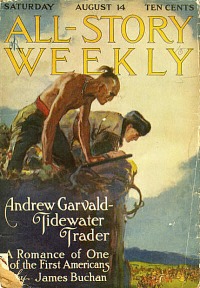
FADED ROSE
August 15: On this day in 1943, actress Barbara Bouchet was born. She played Angela Fraser in “Jungle Ransom," an episode of the Ron Ely Tarzan television series. The episode also featured Fernando Lamas as Ramon Velesquez and Ted Cassidy (Lurch) as Sampson. This is one of Barbara Bouchet’s best television appearances and the over the top action in this episode makes it one of the best episodes of the series. Besides, Ted Cassidy’s character is named Sampson, come on, what more can you ask for.
The German-American actress was born as Bärbel Gutscher in Reichenberg, Sudetenland, a part of Nazi Germany at that time. The location is now part of the Czech Republic. Her family was placed in a resettlement camp after WW2 and then granted permission to emigrate to the United States under the provisions of the Displaced Persons Act of 1948.
During her career she appeared in over 80 films, including “Casino Royale,” “Sweet Charity,” and “Gangs of New York.” She played ‘Kelinda’in the Star Trek episode “By Any Other Name,” ‘Tippy Penfield’ on “Voyage to the Bottom of the Sea,” and ‘Narcissus Darling’ on “The Man From Uncle.” (Seriously, who thinks of these character names?) She was featured in two photographic articles in the American version of Playboy Magazine, once in 1966 and once in 1967. She graced the cover of Playboy Italian) in December 1977. Barbara produced her own series of fitness videos and books.
The drabble for today is “Faded Rose,” and is a taken from comments made by Barbara Bouchet.
FADED ROSE
![]()
You never know how long your money will last. You have to keep working. In Italy I had a hard time convincing them to put me in things other than sex comedies. When I hit 39 I thought, ‘I'll soon be 40’ I kept telling everyone, "Make me ugly, make me old, but give me a part I can sink my teeth into.”
![]()
See Days 16-31 at ERBzine 7386a
![]()
AUGUST III ILLUSTRATIONS COLLAGE
![]()
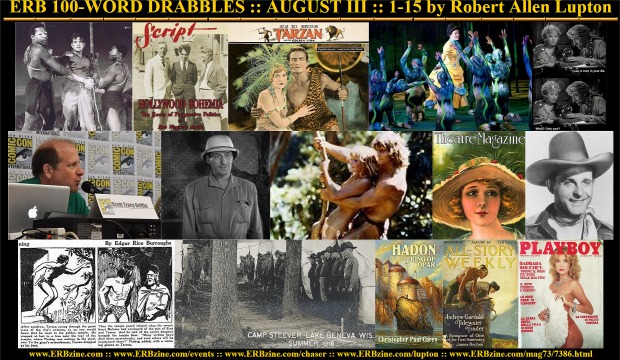
Click for full-size promo collage
